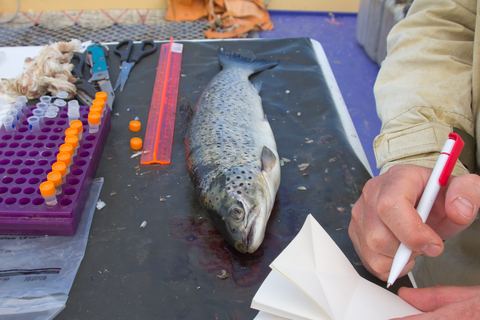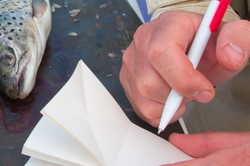A fishing diary is used for recording information about your fishing trips and catches. This information includes the date of fishing, exact location, type of fish, number of fish caught, weather, lures used, and other relevant information concerning the fishing. The purpose of the diary is to save information that can be reviewed later to remember the details of the fishing trip.
What are the benefits of keeping a fishing log?
1. Record-keeping. A Fishing diary allows you to record your fishing experience in a standardized way. Since our memory is inaccurate at times, the fishing log acts as a backup memory. Not only is this a good place to keep and organize your fishing details, it makes the fishing experience very enjoyable to go back and look over time after time.
2. Learning tool. A Fishing diary allows you to determine seasonal and yearly changes regarding your fishing experiences. There are some variations based on certain weather conditions, but with a certain period of time you can easily predict the trend. This is very helpful when it comes to deciding "what to fish for, where, and when" in the future. You can decide on which parameters YOU wish to track.
3. Leisure. Reading a fishing logs on the past can give you a sense of pride on your achievements. Reading it from time to time can also be a great motivation tool. It also give you the confidence in fishing and this translates to even more accomplishments.
BASIC STRUCTURE OF A FISHING DIARY
The structure of the fishing diary depends on your information of interest. More details can be added depending on what you deem helpful. The basic structure of the diary includes:
- Date of fishing - This is the day of fishing. Time can also be included .
- Location - This is where the fishing took place. It is used to note the general and specific location of the fishing. A lake for instance might be having many fishing spots.
- Type of fish - This is where you note the type of the fish caught e.g Tilapia, Nile Perch e.t.c
- Size of fish - Weight, length, girth of each fish.
- Number of fish - Used to note the total number of fish in each species.
- Weather - Gives the weather condition of the time of fishing.
- Lures used - These are the lures or techniques that you used in fishing. It can either be top water or bottom.
How do you use the recorded information?
After filling the fishing diary after some time, you may start to realize a certain pattern. Some weather conditions may lead to fishing more fish than the other and this will help in determining the best weather condition. For example you might notice fishing on a rainy day leads to a better catch than on a sunny day or the other way round.
Analyze this information and it will give you the best condition to fish. It also helps you know what went wrong and why you were not lucky to get a good catch. It also gives you a guide on what to fish for, where, and when.
We provide an easy to use fishing diary here on fishingreminder for our members.
And as an added benifit - most of the information in our fishing log is filled out automatically when you upload a photo of your catch.
check it out: Fishingreminder Fishing Log

No comments yet. Be the first to comment!